The Introduction
Studying in India has been a growing trend among international students in recent years. With its diverse culture, world-class educational institutions, and competitive programs, India has become an attractive destination for students seeking quality education. This Collegedunia Insights delves into the trend analysis and the factors responsible for it, also it highlights the opportunities and challenges associated with these trends.
1. Record High International Student Enrollments in 2023:
Data from the Ministry of Education in India reveals a consistent increase in international student enrollment. In 2010, there were approximately 21,000 international students studying in India. By 2020, this number had surged to nearly 49,000, representing an impressive 133% increase over the decade.The COVID-19 pandemic caused a decline in enrollments. However, following the lockdown, data from Collegedunia indicates a significant recovery in international student enrollments in 2023, reaching a record high of 42,801, marking a remarkable 55% increase.
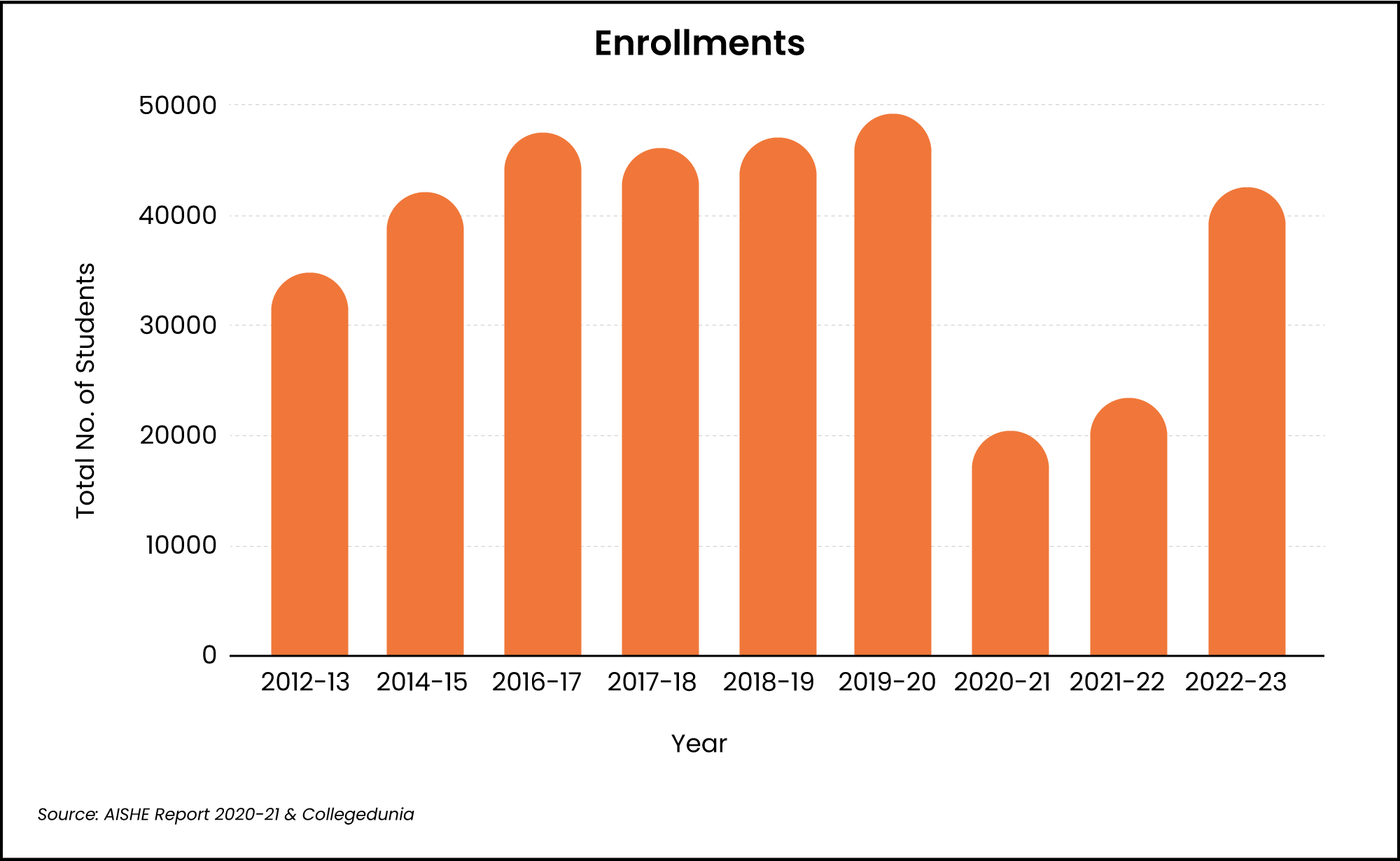
This trend can be attributed to several key factors:
- Quality Education
- Affordability
- Cultural Diversity
- English-Medium Instruction
2. 74% of International Students Favour Undergraduate (UG) Courses, with B.Tech as Top Choice:
The observation from AISHE Report shows that 74% of international students choose to pursue undergraduate (UG) courses in India, with a pronounced preference for Bachelor of Technology (B.Tech) programs, sheds light on a significant trend in the realm of international education. It was noticed that 74% International students opt for UG courses with B.tech as the most Preferred Course.
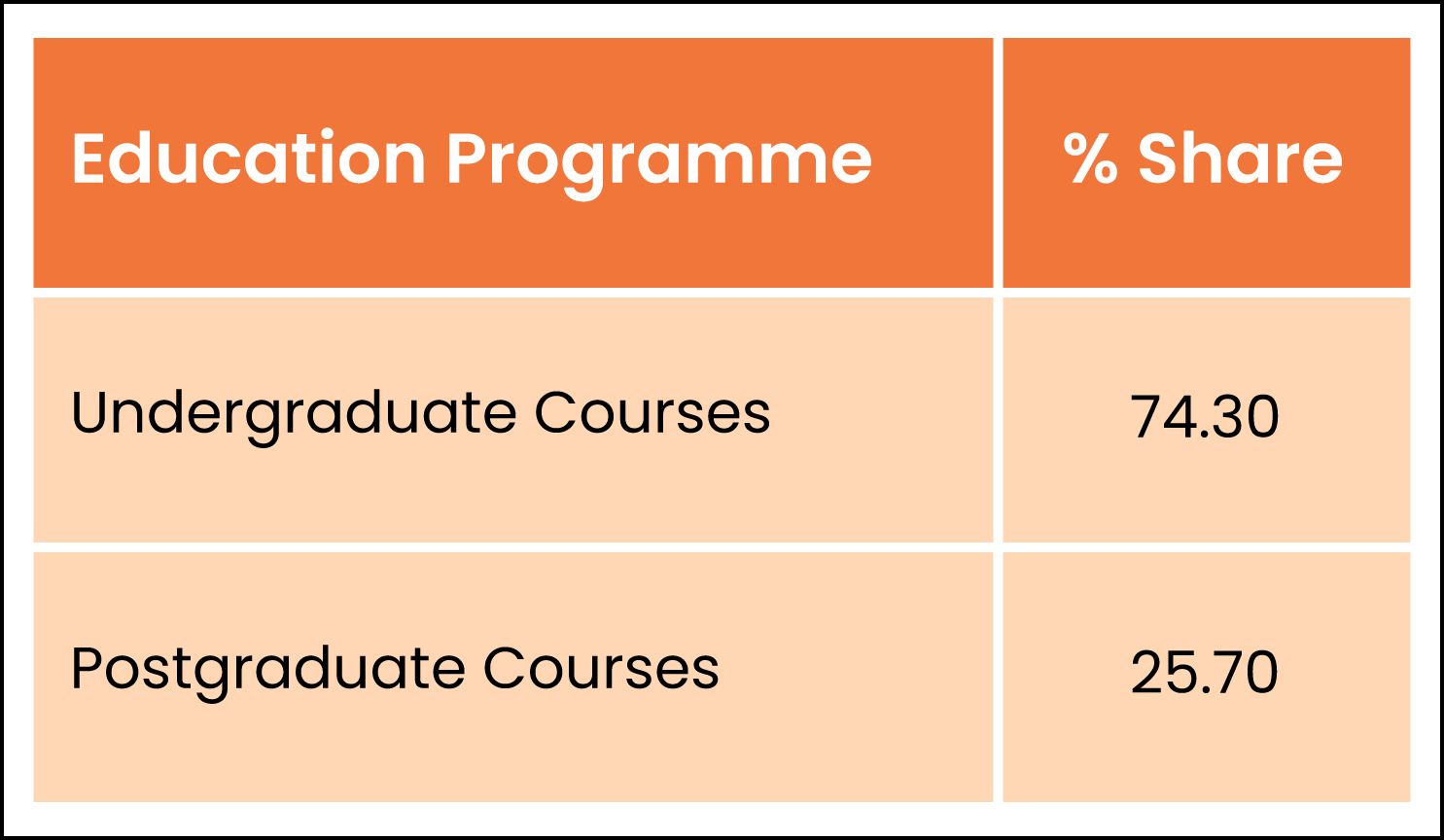
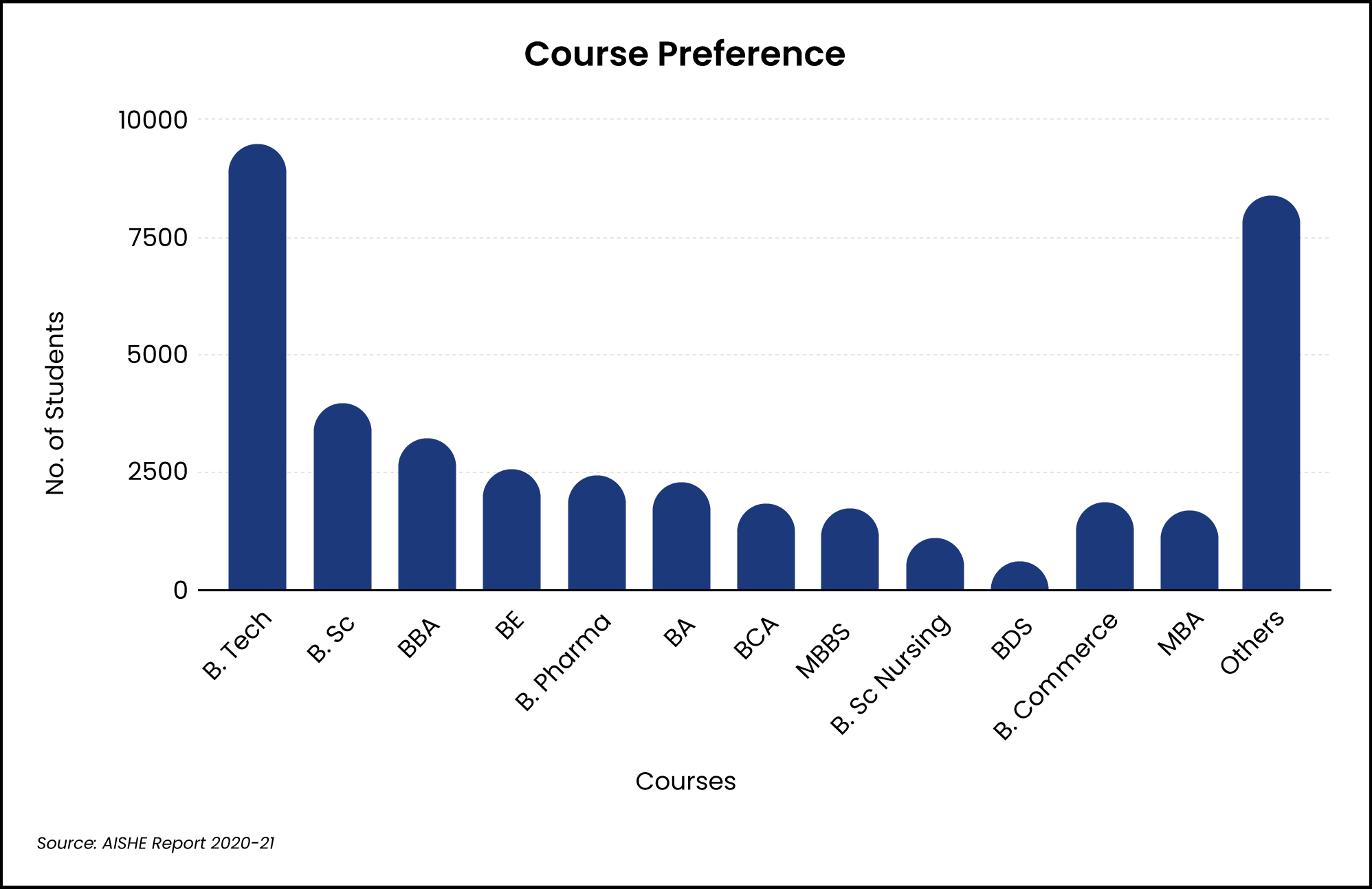
3.Growing Diversity Among International Students in India, with a Rise from African and Middle Eastern Nations
The majority of international students in India come from neighbouring countries such as Nepal, Bangladesh, and Bhutan. However, there has been a noticeable increase in students from African and Middle Eastern countries, contributing to the diversity of the student population.
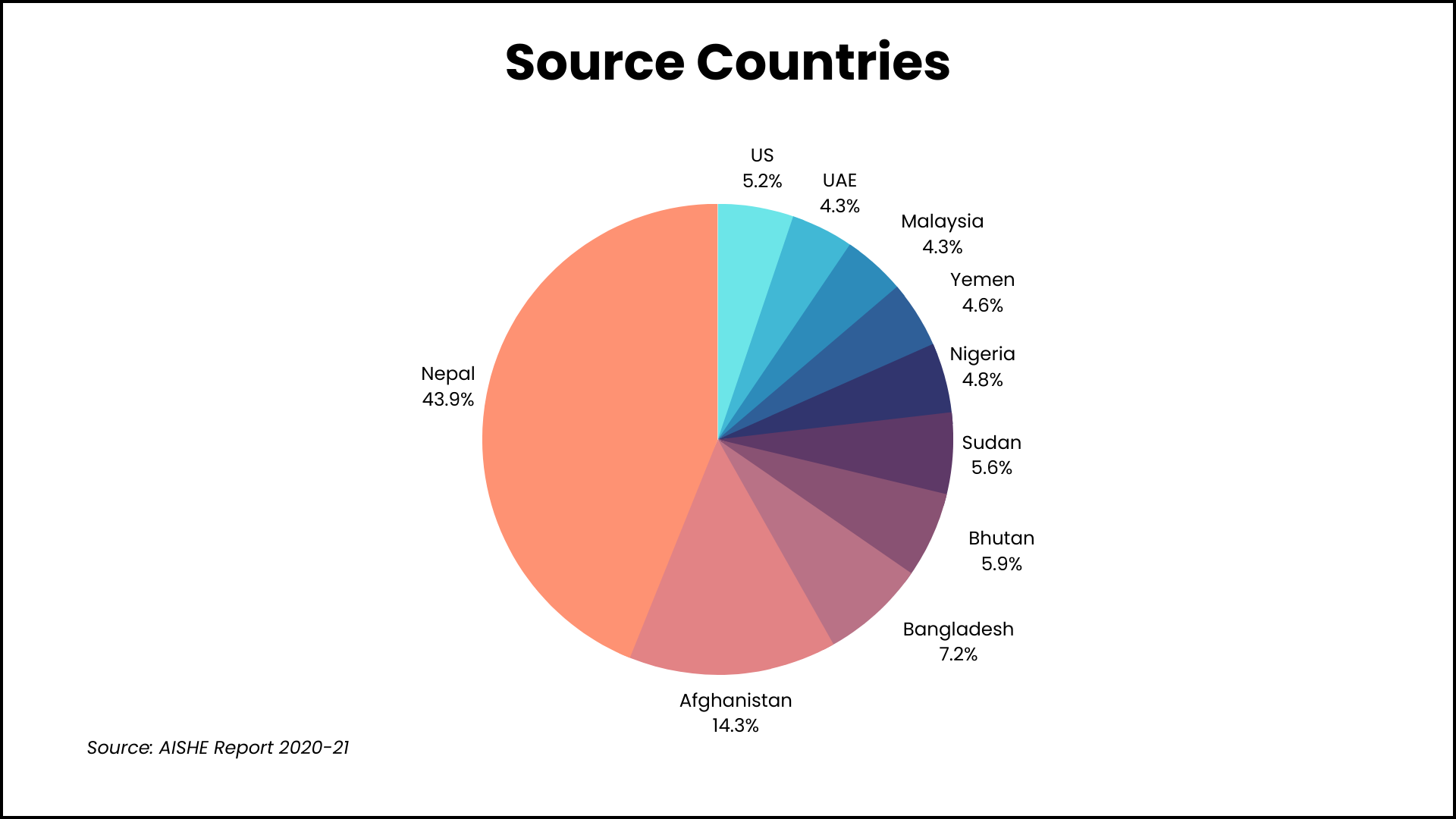
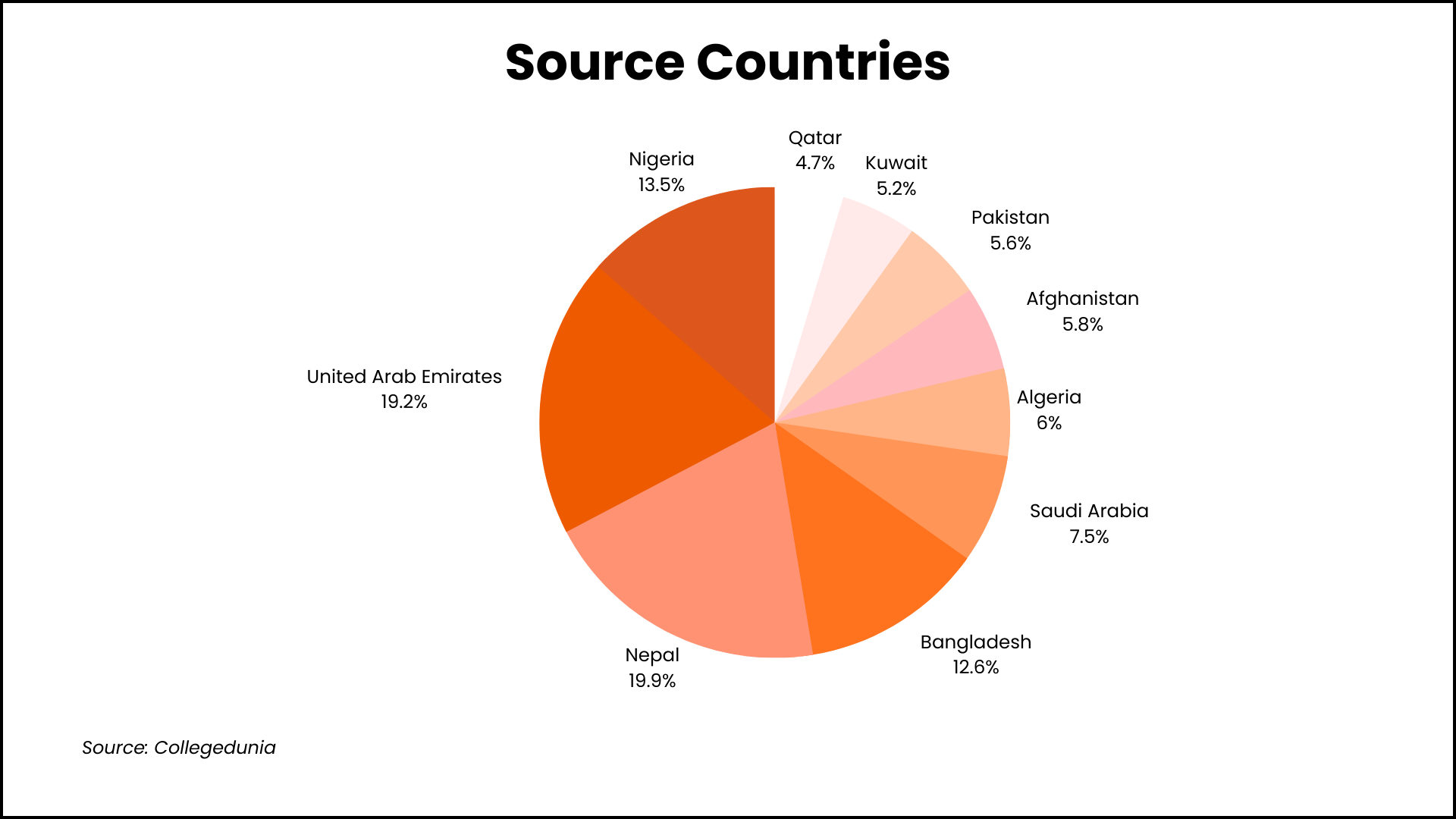
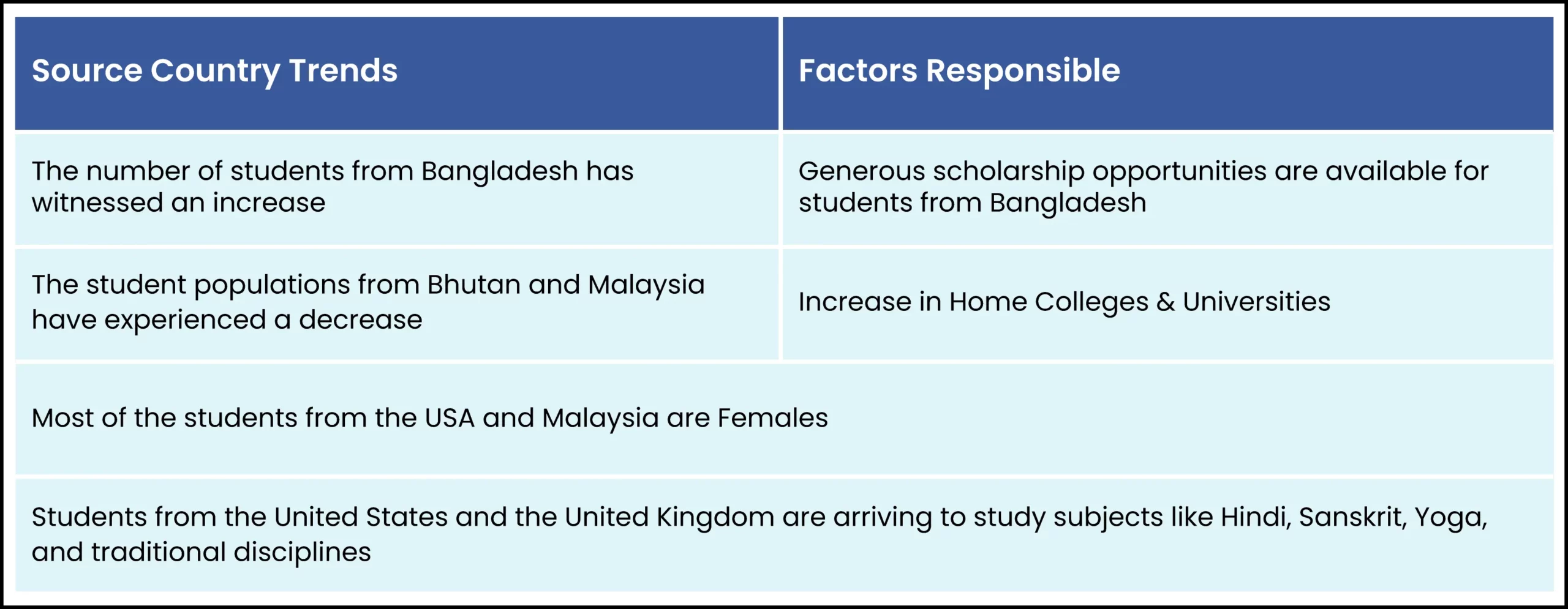
4. International Students Spread Across India's Educational Hubs
Data from the All India Survey on Higher Education (AISHE) & Collegedunia reveals that international students are distributed across India, with major educational hubs like Karnataka, Punjab, Maharashtra, Tamil Nadu.
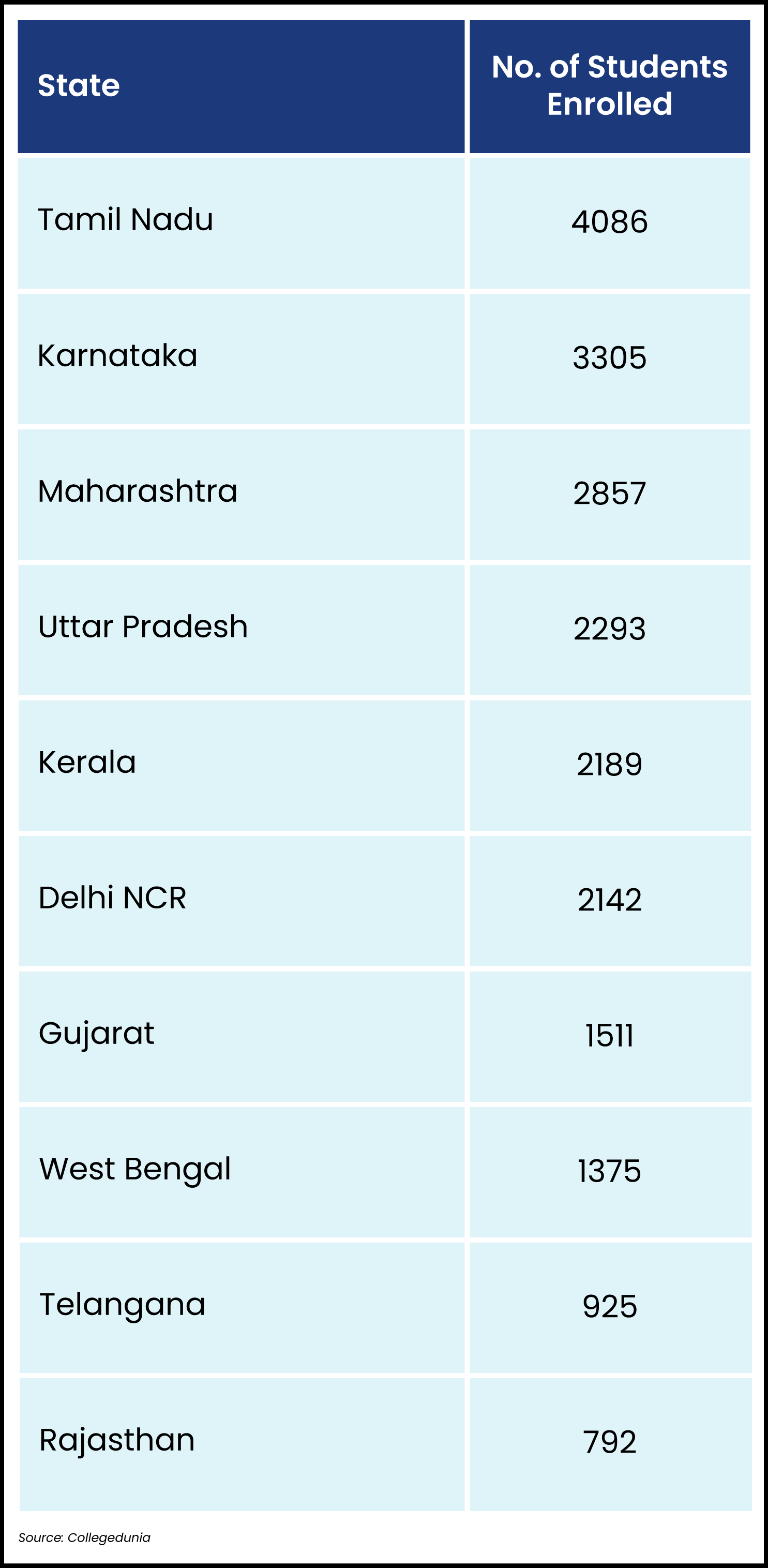
As per Collegedunia Data, In the year 2023, the educational Institutions enrolling maximum International students were: Christian Medical College, All India Institute of Medical Sciences, Indira Gandhi National Open University, Delhi University, Christ University, Chandigarh University, Banaras Hindu University, University of Calcutta, Parul University.
5. Gender Gap in International Student Enrollment in India Narrows in 2023
According to the AISHE Report, There exists a notable disparity in the enrollment numbers of female students compared to male students who come to India for education.
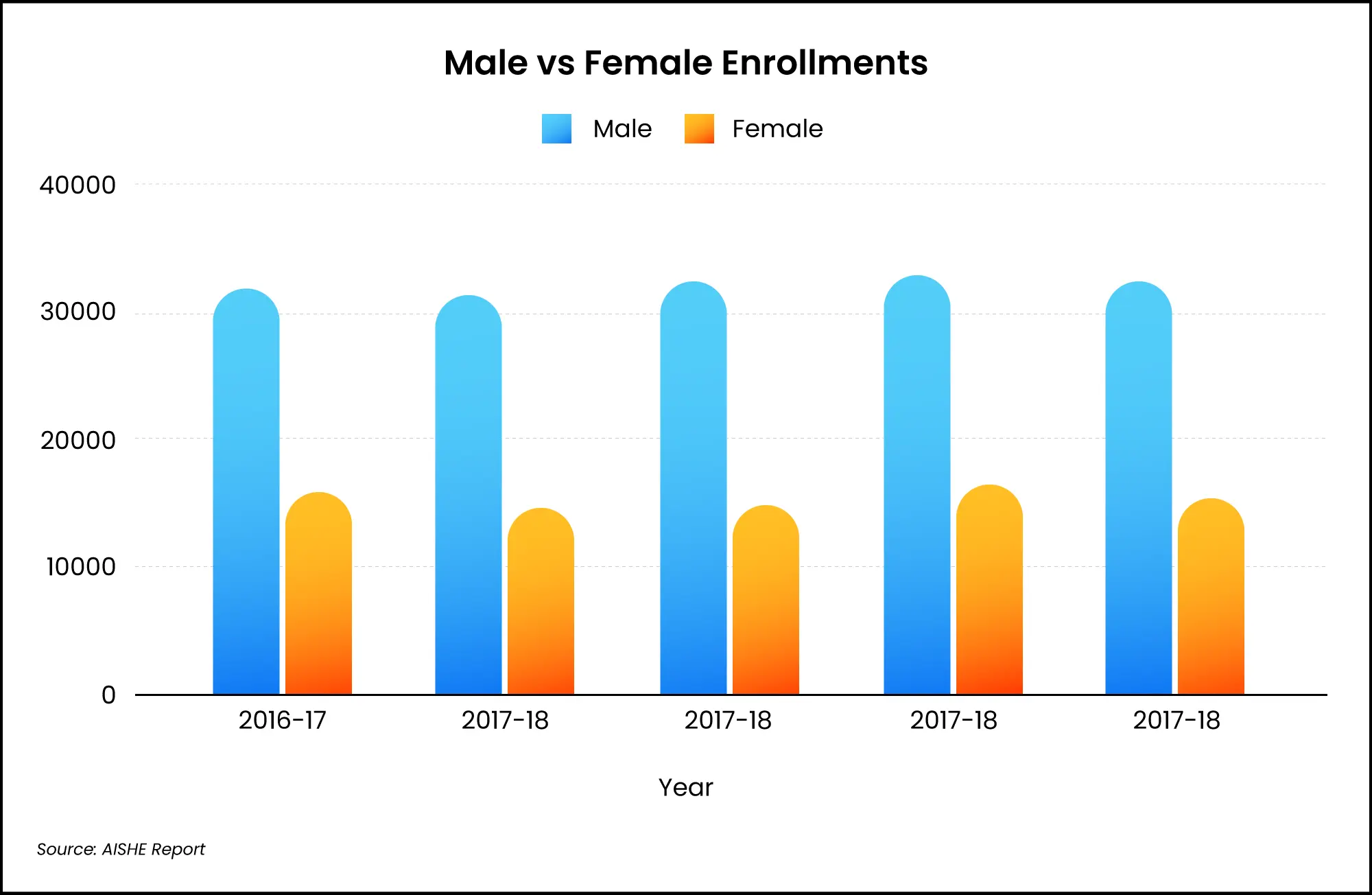
Nonetheless, according to data from Collegedunia, there appears to be a decrease in the gap in the year 2023.
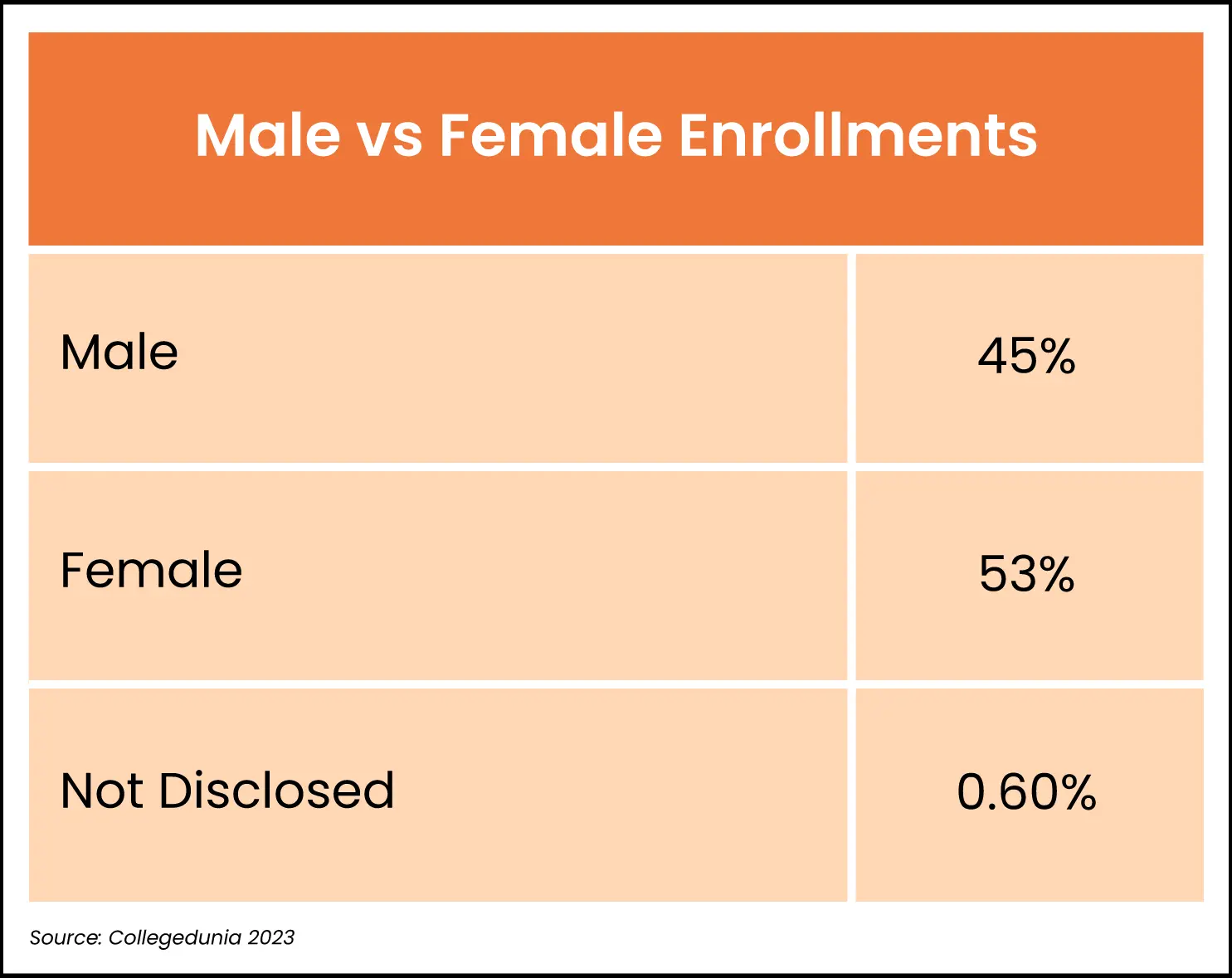
Opportunities for International Students
Studying in India presents several opportunities for international students:
- Diverse Academic Programs: India offers a wide range of academic programs, from traditional arts and sciences to emerging fields like data science and artificial intelligence.
- Global Networking: Interacting with Indian and international peers creates a global network that can be beneficial for future career opportunities.
- Research and Innovation: India’s universities are hubs of research and innovation, offering students opportunities to work on cutting-edge projects.
- Cultural Immersion: International students have the chance to immerse themselves in India’s rich culture and history, gaining a broader perspective on the world.
Challenges and Concerns
While the trend of studying in India is on the rise, it’s not without challenges:
- Language Barrier: Despite English being widely spoken, language barriers can still exist, hindering effective communication and learning for non-native English speakers.
- Cultural Adjustment: India’s cultural norms and practices can be vastly different from those in the students’ home countries, leading to culture shock and adjustment difficulties.
- Infrastructure and Administrative Issues: Some institutions may lack modern facilities, and bureaucratic hurdles can slow down administrative processes.
Safety Concerns: Safety concerns can be prevalent in certain areas of India, necessitating extra precautions for international students.
Conclusion
The trend of international students choosing India as a study destination continues to grow due to its quality education, affordability, cultural richness, and opportunities for personal and academic growth. While challenges exist, such as language barriers and cultural adaptation, these can often be mitigated through proper preparation and support systems.
As India continues to invest in its education sector and internationalization efforts, it is likely that the trend of studying in India will continue to rise, offering students from around the world an enriching and transformative educational experience.


